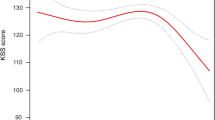Abstract
Computer-assisted surgery-total knee arthroplasty (CAS-TKA) has been suggested to afford greater precision than conventional TKA; however, it is unclear whether this is influenced by preoperative angular deformity. This prospective study was conducted to determine the effect of preoperative angular deformity on the postoperative mechanical axis. Sixty patients underwent stage bilateral TKA; CAS-TKA was performed on one side and conventional TKA on the other side. It was demonstrated that severity of preoperative angular deformity affected the resulting alignment in conventional TKA, but not in CAS-TKA. The mechanical axis of the leg was within 3° of the planned axis in 83% of CAS-TKA but only 32% of conventional TKA cases when the preoperative angular deformity was >12° (P < 0.01). When the preoperative angular deformity was <12°, the mechanical axis of the leg was within 3° of the planned axis in 90% of CAS-TKA but only 69% of conventional TKA (P < 0.025). This study thus concluded that the resulting alignment in conventional TKA is influenced by large preoperative angular deformity. Consistent results in alignment can be achieved with CAS-TKA, though preoperative angular deformity still played a role in predicting the postoperative mechanical axis. CAS-TKA achieves better postoperative alignment than conventional TKA in both severe and mild preoperative angular deformity.


Similar content being viewed by others
References
Decking R, Markmann Y, Fuchs J, Puhl W, Scharf HP (2005) Leg axis after computer-navigated total knee arthroplasty: a prospective randomized trial comparing computer-navigated and manual implantation. J Arthroplast 20:282–288
Ewald FC (1989) The Knee Society total knee arthroplasty roentgenographic evaluation and scoring system. Clin Orthop Relat Res 248:9–12
Haaker RG, Stockheim M, Kamp M, Proff G, Breitenfelder J, Ottersbach A (2005) Computer-assisted navigation increases precision of component placement in total knee arthroplasty. Clin Orthop Relat Res 433:152–159
Hsu RW, Himeno S, Coventry MB, Chao EY (1990) Normal axial alignment of the lower extremity and load-bearing distribution at the knee. Clin Orthop Relat Res 255:215–227
Insall JN, Binazzi R, Soudry M, Mestriner LA (1985) Total knee arthroplasty. Clin Orthop Relat Res 192:13–22
Kawakami H, Sugano N, Yonenobu K, Yoshikawa H, Ochi T, Hattori A, Suzuki N (2004) Effects of rotation on measurement of lower limb alignment for knee osteotomy. J Orthop Res 22:1248–1253
Koshino T, Takeyama M, Jiang LS, Yoshida T, Saito T (2002) Underestimation of varus angulation in knees with flexion deformity. Knee 9:275–279
Krackow KA, Pepe CL, Galloway EJ (1990) A mathematical analysis of the effect of flexion and rotation on apparent varus/valgus alignment at the knee. Orthopedics 13:861–868
Matziolis G, Krocker D, Weiss U, Tohtz S, Perka C (2007) A prospective, randomized study of computer-assisted and conventional total knee arthroplasty. Three-dimensional evaluation of implant alignment and rotation. J Bone Joint Surg Am 89:236–243
Rauh MA, Boyle J, Mihalko WM, Phillips MJ, Bayers-Thering M, Krackow KA (2007) Reliability of measuring long-standing lower extremity radiographs. Orthopedics 30:299–303
Rosenberger RE, Fink C, Quirbach S, Attal R, Tecklenburg K, Hoser C (2008) The immediate effect of navigation on implant accuracy in primary mini-invasive unicompartmental knee arthroplasty. Knee Surg Sports Traumatol Arthrosc 16:1133–1140
Rosenberger RE, Hoser C, Quirbach S, Attal R, Hennerbichler A, Fink C (2008) Improved accuracy of component alignment with the implementation of image-free navigation in total knee arthroplasty. Knee Surg Sports Traumatol Arthrosc 16:249–257
Sparmann M, Wolke B, Czupalla H, Banzer D, Zink A (2003) Positioning of total knee arthroplasty with and without navigation support. A prospective, randomised study. J Bone Joint Surg Br 85:830–835
Stulberg SD, Loan P, Sarin V (2002) Computer-assisted navigation in total knee replacement: results of an initial experience in thirty-five patients. J Bone Joint Surg Am 84(A Suppl 2):90–98
Takasaki M, Matsuda S, Fukagawa S, Mitsuyasu H, Miura H, Iwamoto Y (2009) Accuracy of image-free navigation for severely deformed knees. Knee Surg Sports Traumatol Arthrosc. doi: 10.1007/s00167-009-0944-4
Teeny SM, Krackow KA, Hungerford DS, Jones M (1991) Primary total knee arthroplasty in patients with severe varus deformity. A comparative study. Clin Orthop Relat Res 273:19–31
Victor J, Hoste D (2004) Image-based computer-assisted total knee arthroplasty leads to lower variability in coronal alignment. Clin Orthop Relat Res 428:131–139
Wang JW, Wang CJ (2002) Total knee arthroplasty for arthritis of the knee with extra-articular deformity. J Bone Joint Surg Am 84-A:1769–1774
Weng YJ, Hsu RW, Hsu WH (2009) Comparison of computer-assisted navigation and conventional instrumentation for bilateral total knee arthroplasty. J Arthroplasty 24:668–673
Zumstein MA, Frauchiger L, Wyss D, Hess R, Ballmer PM (2006) Is restricted femoral navigation sufficient for accuracy of total knee arthroplasty? Clin Orthop Relat Res 451:80–86
Author information
Authors and Affiliations
Corresponding author
Rights and permissions
About this article
Cite this article
Hsu, WH., Hsu, R.W.W. & Weng, YJ. Effect of preoperative deformity on postoperative leg axis in total knee arthroplasty: a prospective randomized study. Knee Surg Sports Traumatol Arthrosc 18, 1323–1327 (2010). https://doi.org/10.1007/s00167-010-1146-9
Received:
Accepted:
Published:
Issue Date:
DOI: https://doi.org/10.1007/s00167-010-1146-9




